Spaces
Volumes and areas
Spaces are volumes and areas that are used as tools in different processes during the life cycle of a construction. Spaces are very important for reusing information. Their application are extremely diverse, but can be used for, among other things:
Spaces (volumes):
- Usage functions
- Building physics calculations
- Variable loading
- Installation calculations
- Facility management
Spaces (areas):
- GFA/UA ratio
- Area tables
- Functional layouts/zoning plan
- Compartmentalisation
Spatial and registrative
Spaces can be divided into spatial and registrative elements. Spatial elements are the spaces themselves, bounded and exclusive of the separation structure. Registrative elements are areas and compartments.
Spatial elements, structural
- space (office, living room)
a space is accessible by people, is bounded by building elements at least at the bottom and/or the top and has a net height of at least 1.5 m
- spatial element ? space (crawl space, space above suspended ceiling)
Spatial elements, building services related
- MEP/HVAC Spaces
Registrative elements
- building
- plot
- areas in accordance with regulations such as Habitable Area/ UA/ GFA)
- compartmentation (fire, house type, building number)
Spaces and aeras (IfcSpace)
Spaces provide important building information, which determines many other parts of the building. This can be reused by various parties for their own work activities (for example: calculating the size of air ducts by an mep engineer).
Adding information to a space is not expected from all those involved, think for example of a wall supplier. However, this supplier can extract information from the spaces that are separated by their walls. Think of fire class, burglar resistance or use (for example, a bathroom).
Use
Agree in advance on how you are going to use spaces and areas. After all, the use dictates which rules these have to comply with, for example the use of nationally applicable rules for determining areas. A space has a name (Name) and a type (ObjectType). A name can be a toilet or a living room. These two names each have a different function; they are of a different type. The type is the user function according to the applicable building regulations. In the examples of a toilet and a living room, these are respectively 'toilet space' and 'habitable space'.
Zoning (IfcZone)
By grouping spaces into zones, filters can be created. For example, a house is a collection of spaces. Living room, bedrooms, sanitary rooms. By giving each of these spaces a name (Name), it is possible to select all the rooms of one house separately.
Some zones are common, such as a type of dwelling. Other zones are unique, such as a building number. Zone names can be meaningless, such as 'A'. This is handled by the ObjectType. It indicates that the name 'A' belongs to the ObjectType 'type of dwelling'.
For example, a living room is part of a habitable area, building number, type of dwelling, (sub) fire compartment and/or building part. Each zone has a name and an associated type in which this is described. Each space can therefore be part of several zones.
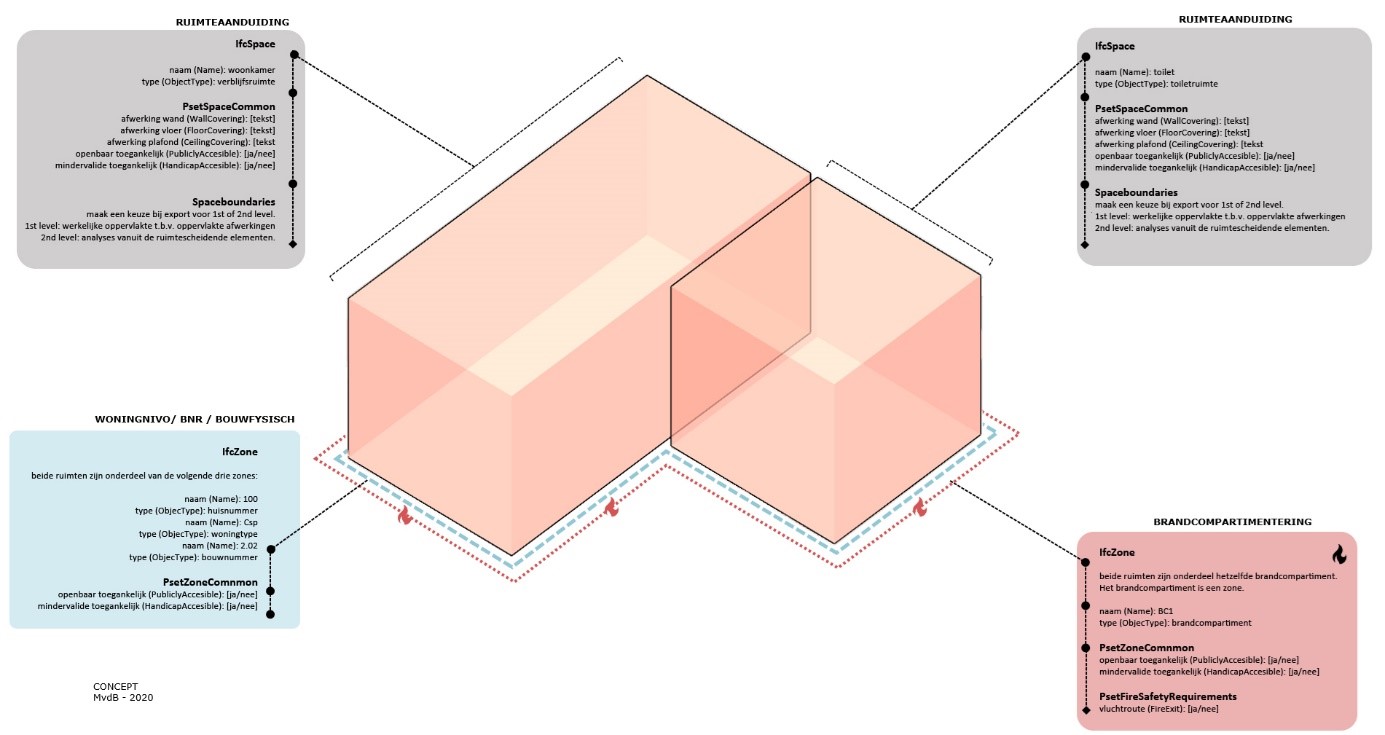
Figure 4.1.1: Schematic example of a living room and toilet
The two blocks in Figure 4.1.1 are the living room and toilet areas. The type is shown underneath. The space may have properties linked to it from the PsetSpaceCommon. The most common properties are wall, floor and ceiling covering (WallCovering, FloorCovering and CeilingCovering). In addition, the accessibility is often indicated, such as wheelchair accessible and/or publicly accessible.
The light blue area is a zone (IfcZone) that indicates that both spaces are part of the same apartment, type of dwelling and building number. The accessibility requirements also apply here according to the IfcZoneCommon.
The red dotted line indicates fire compartments. These two spaces both belong to the same fire compartment. If you want to say something about fire safety, there is an additional property set Pset_SpaceFireSafetyRequirements. It applies to both IfcSpace and IfcZone. This applies to several property sets.
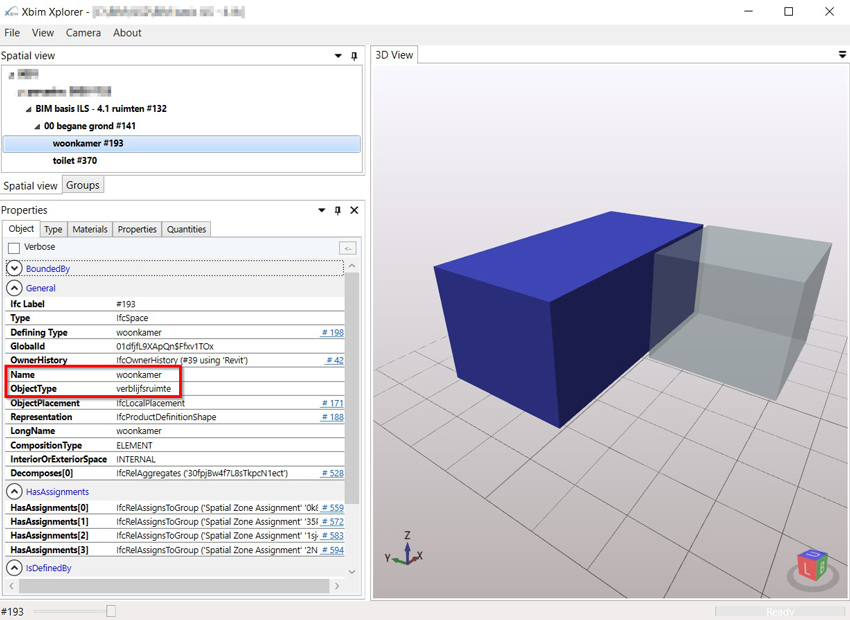
Figure 4.1.2: IFC viewers
When we process the information from Figure 1 and export it to IFC, we see it in the viewers. Figure 4.1.2 shows that the Name is 'living room' and the ObjectType is 'habitable room'.
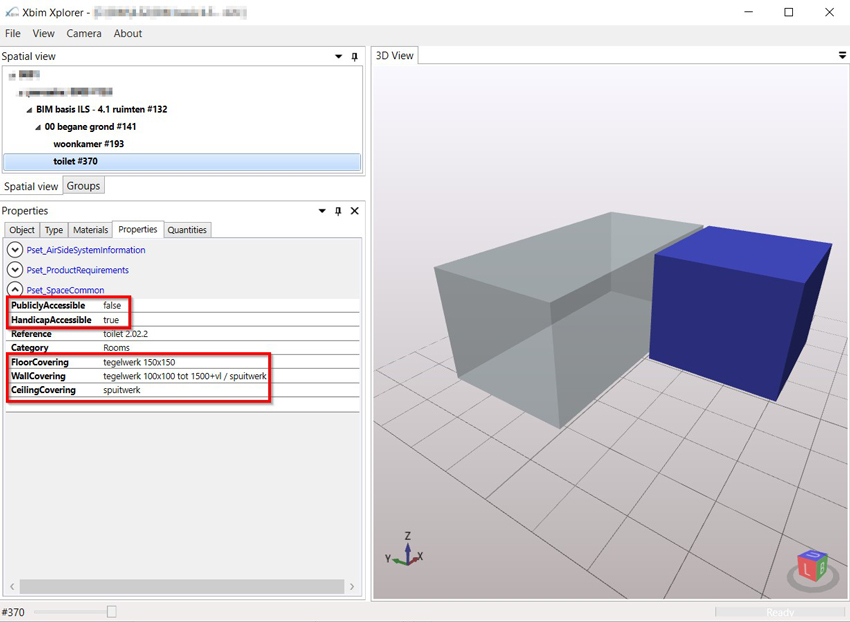
Figure 4.1.3: PsetSpaceCommon
The PsetSpaceCommon with the five named properties.
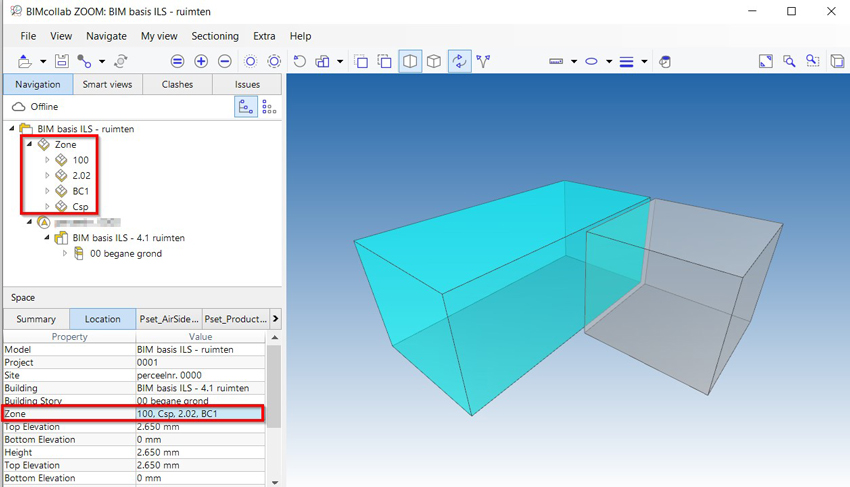
Figure 4.1.4: Zones
In Figure 4.1.4 the four zones are framed in red. The four zones can be seen in the tree structure. In the model, the living room is selected. The lower red frame shows the 'Zone' property. The value is not one zone, but the four zones to which this room belongs.
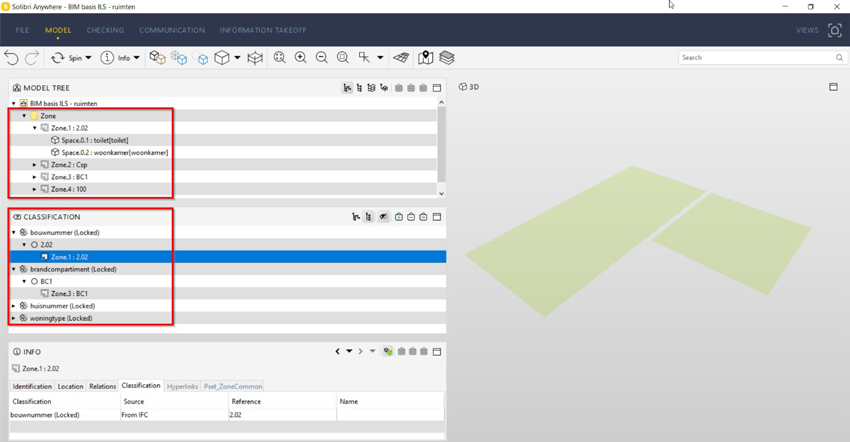
Figure 4.1.5: Zone classification
If you want to go one step further, it is even possible to make a classification of the zones.